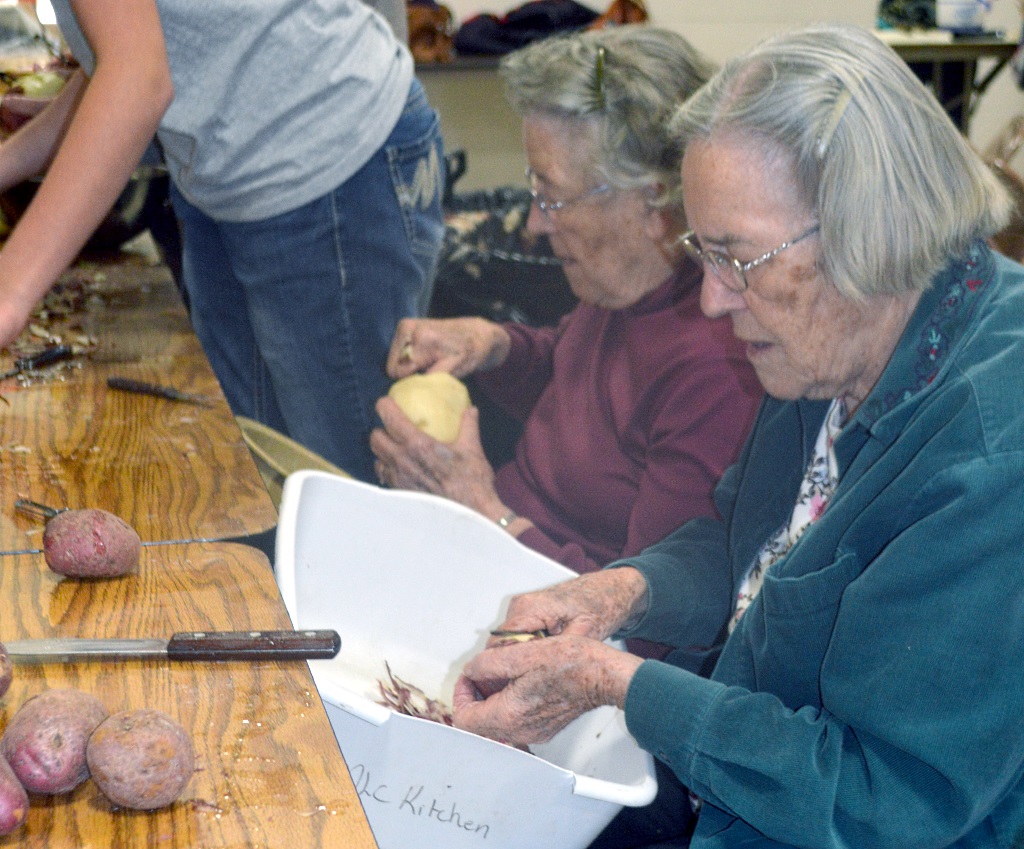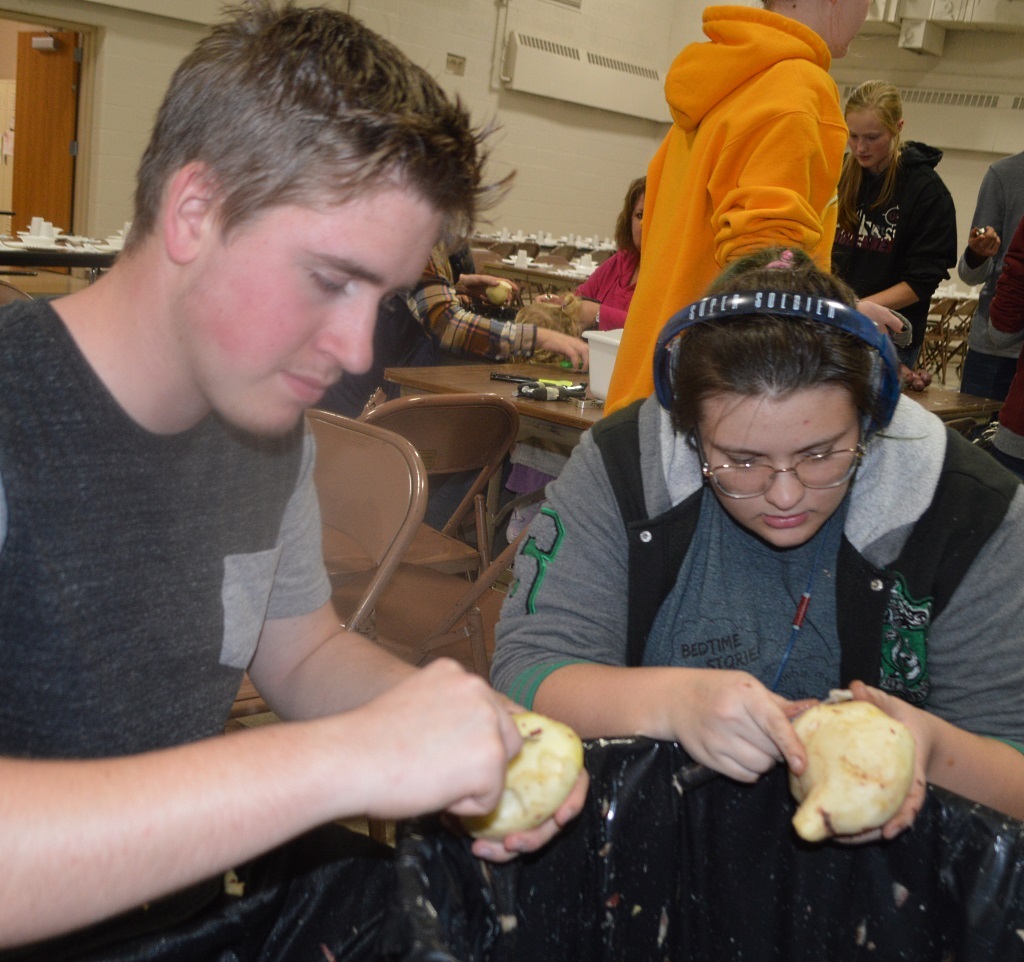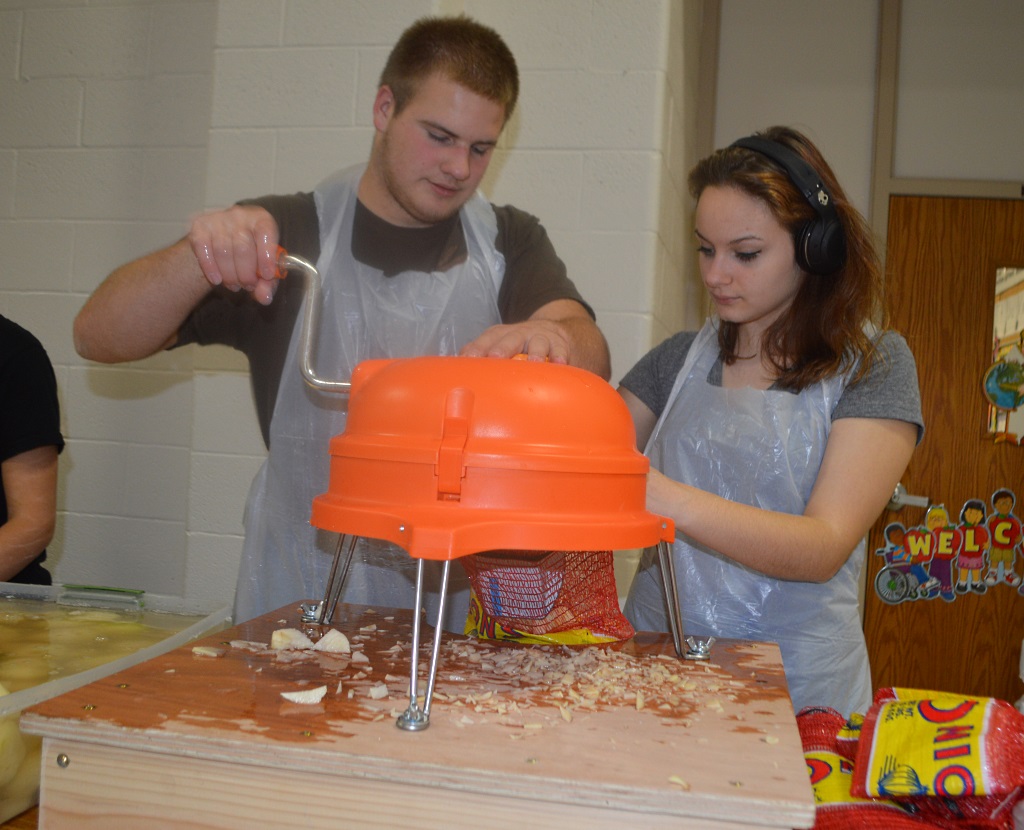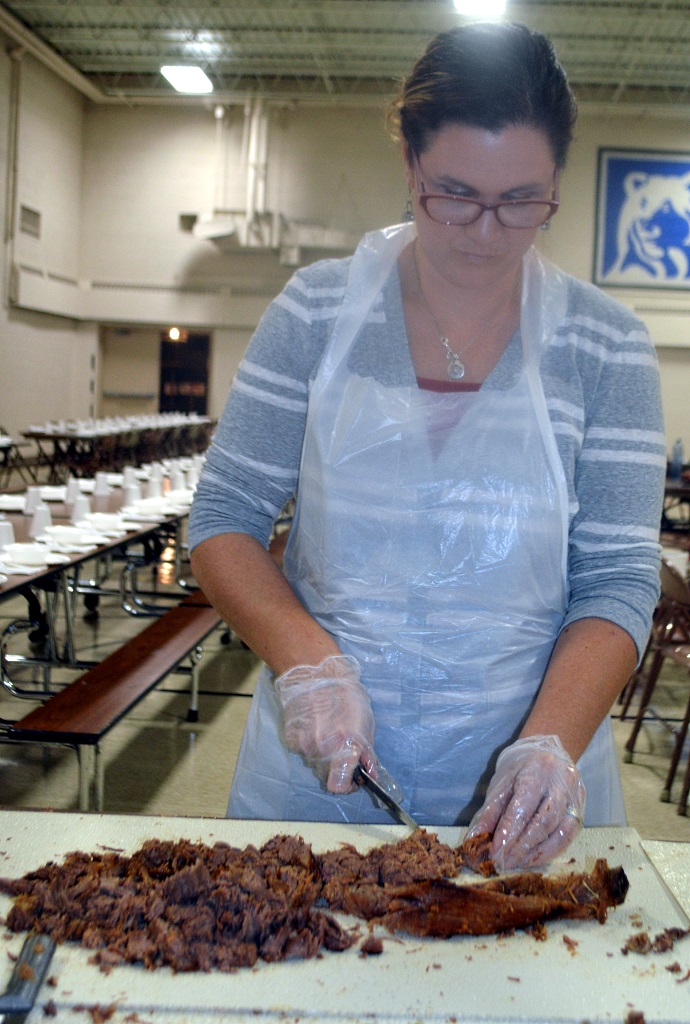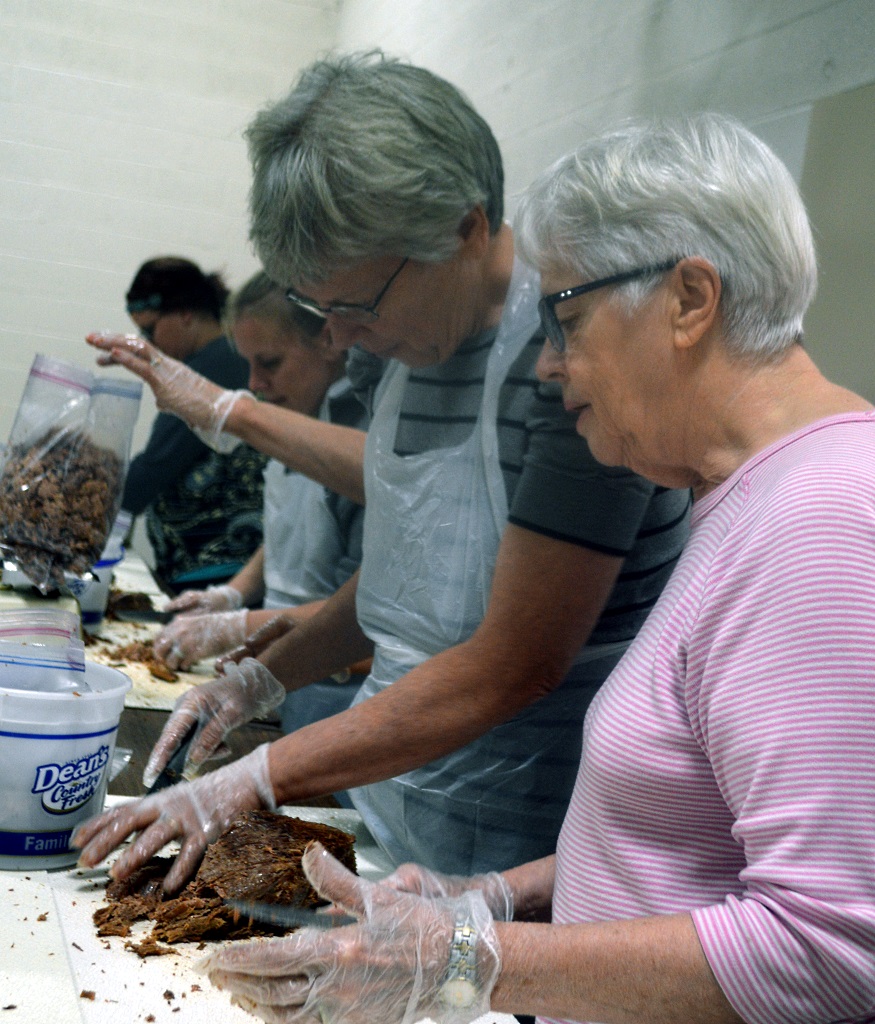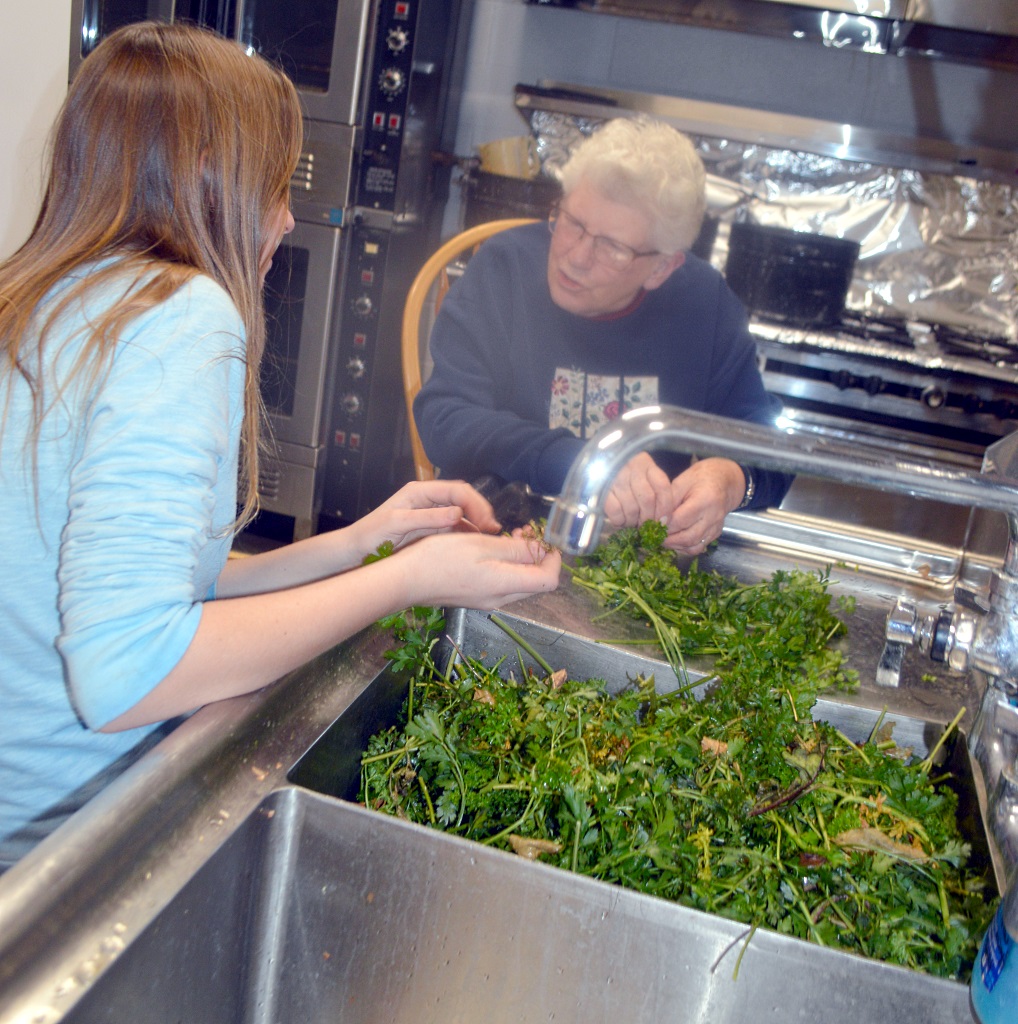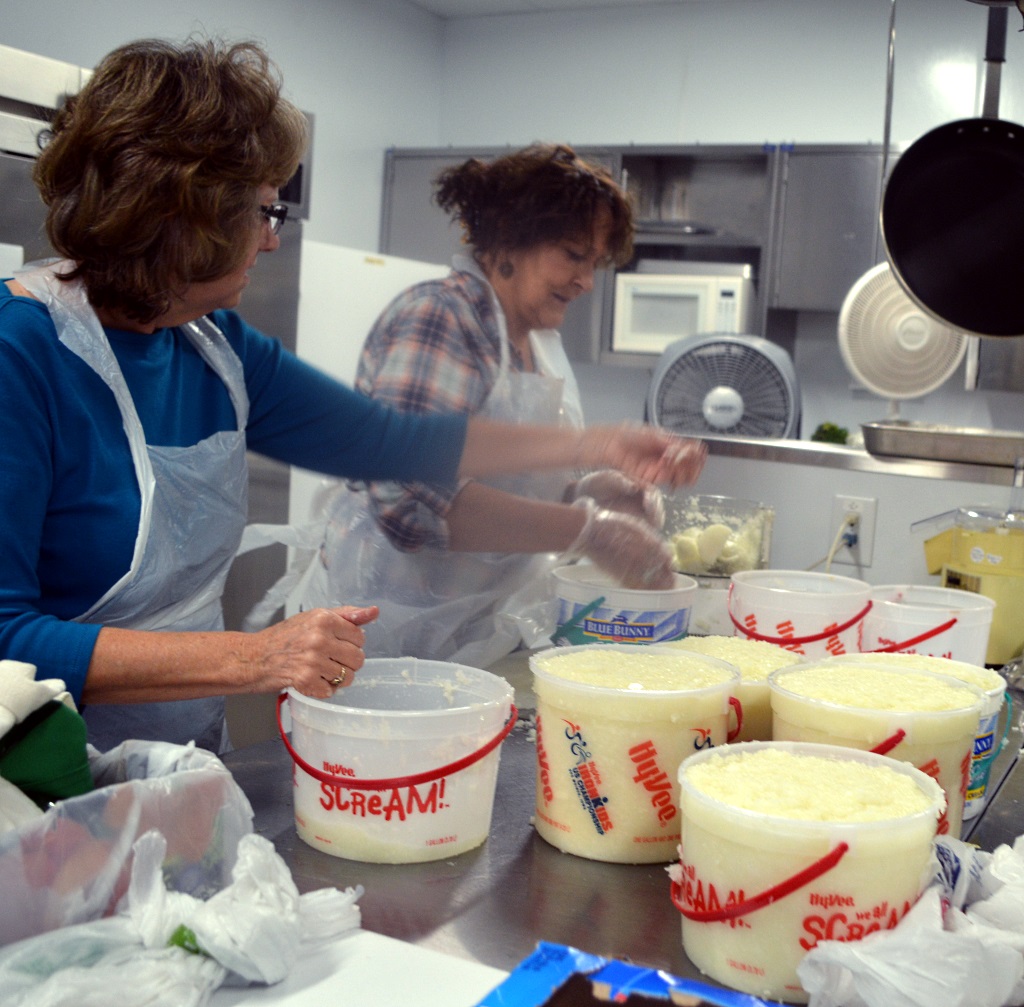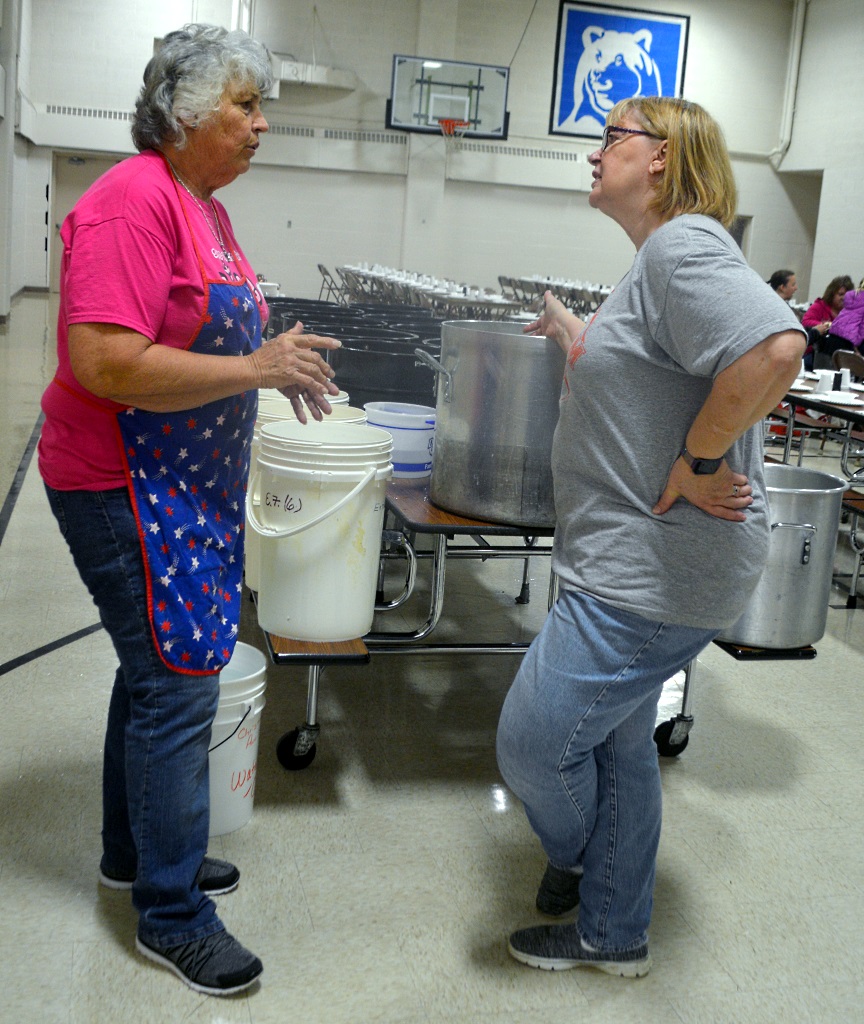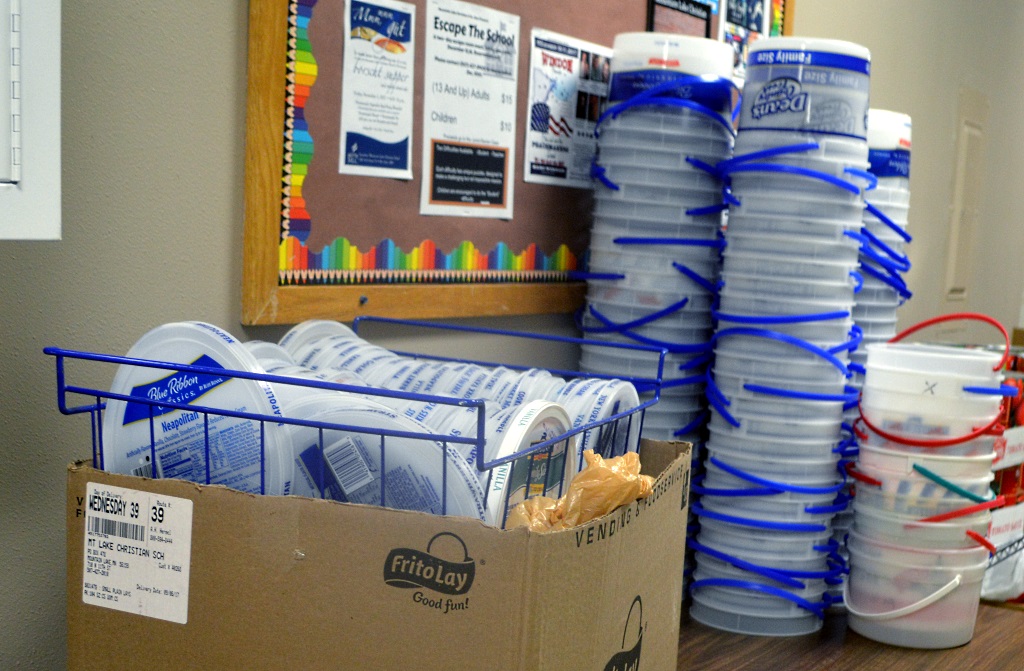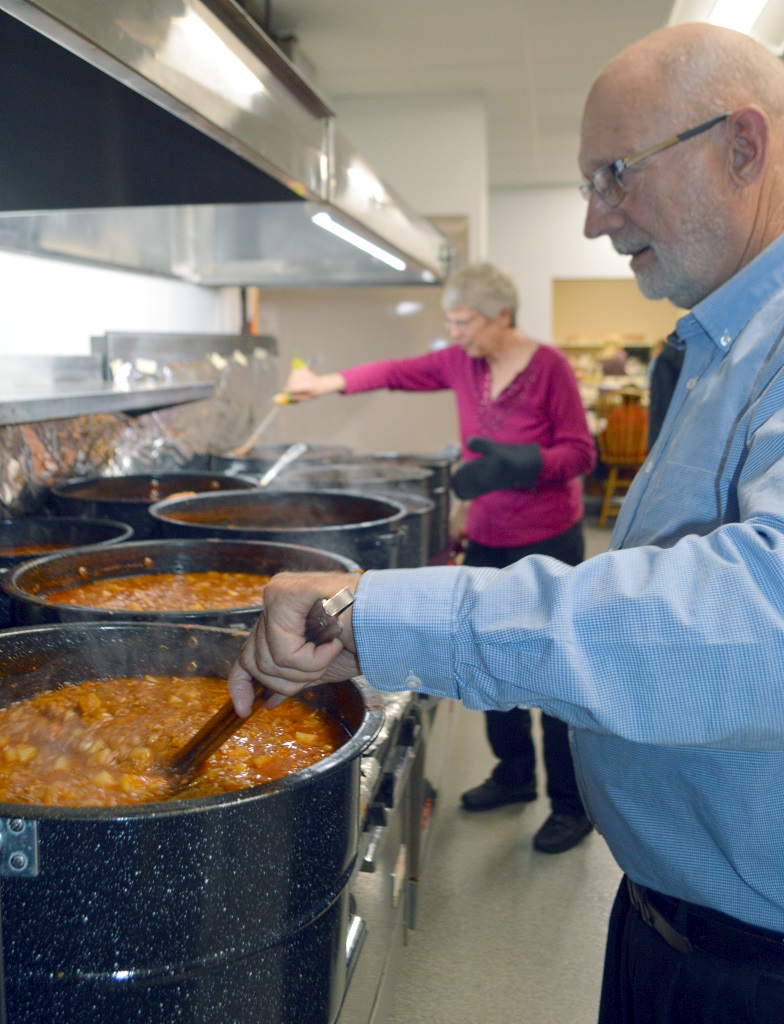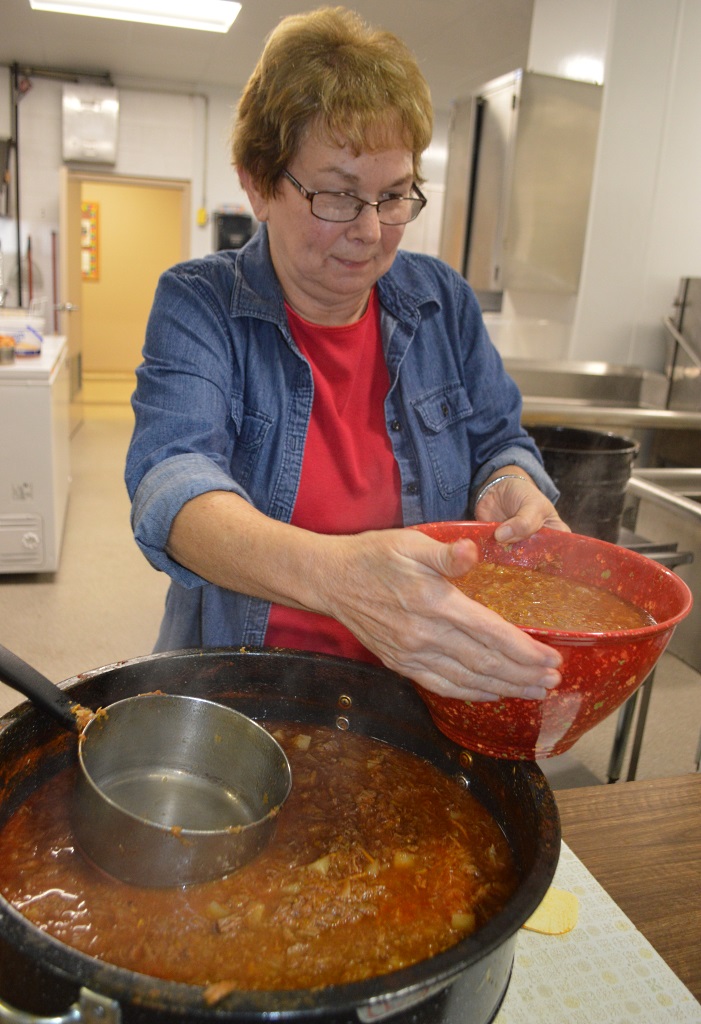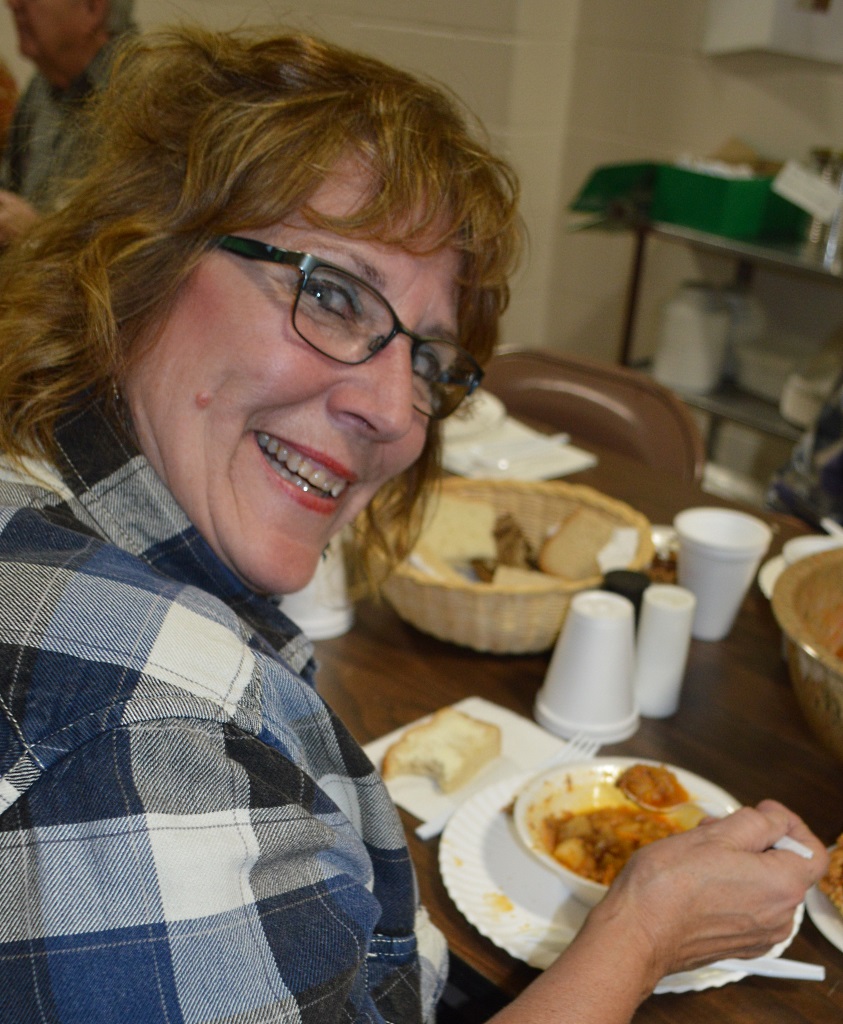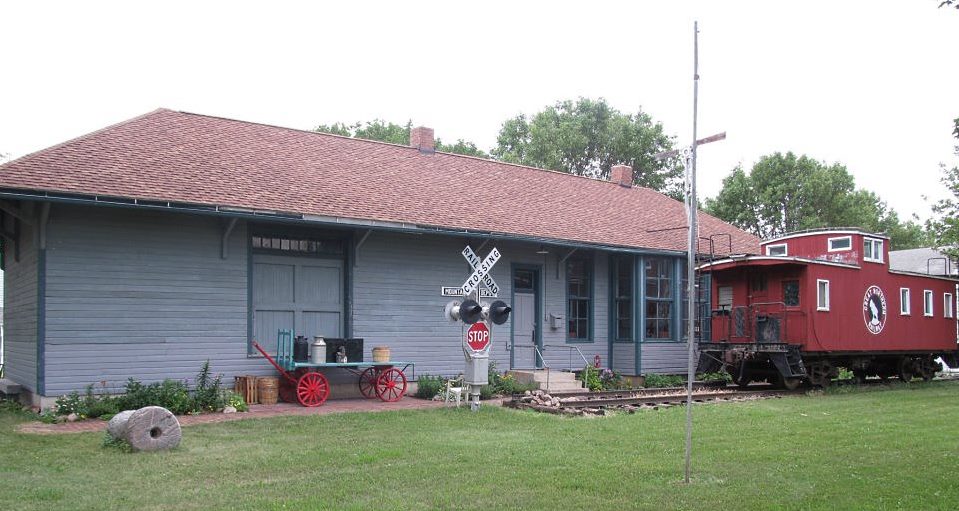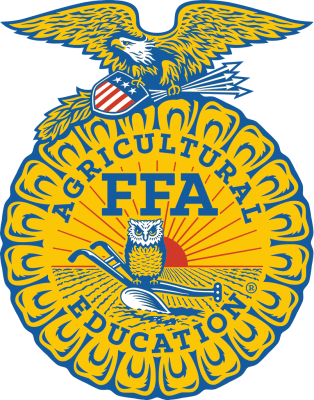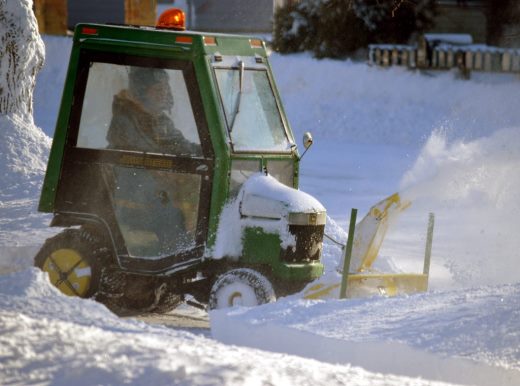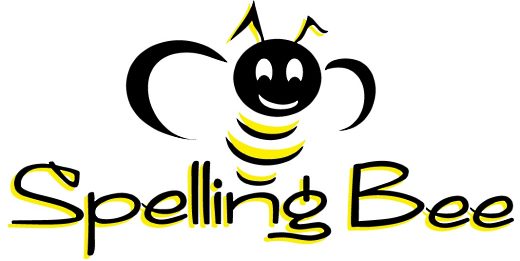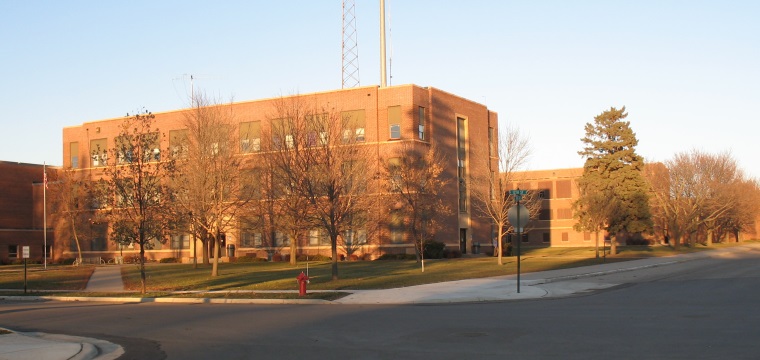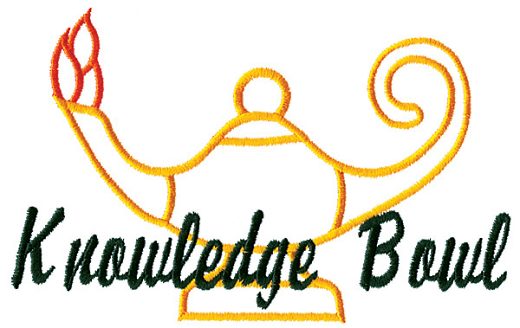Annual Borscht Supper fundraiser for school began in March 1966
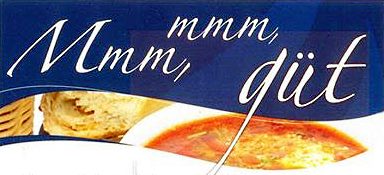
+ 400 pounds of potatoes.
+ 150 pounds of carrots.
+ 20 pounds of green peppers.
+ 300 pounds of beef.
+ 10 cans of beef base.
+ 300 pounds of cabbage.
+ 150 pounds of onions.
+ 90 giant cans of tomato juice.
+ 20 pounds of butter.
+ 100 loaves of bread.
+ 40 pounds of ice.
+ 1 gallon of vinegar.
+ 10 gallons of water.
+ 24 quarts of Half & Half.
+ 720 cups of coffee.
+ 110 pies.
= A Mountain Lake Christian (MLC) Borscht Supper.
Mountain Lake has a history steeped in the story of Mennonite immigrants from the Ukraine who settled the area 200+ years ago, where borscht was a staple dish.
This vegetable and beef soup is heavy on chunks of beef, potatoes, carrots, green peppers, onion – and cabbage. The 2017 Borscht Supper, now in its 51s year, was held today (Friday, November 3), and once again featured the “bottomless borscht bowl” (all-you-can eat) – the same with homemade bread – all topped with a slice of homemade pie. A gluten-free version was also available.
Per tradition, 34 kettles of borscht (equaling 150 gallons) simmer on the stoves in the MLC kitchen beginning at sunrise on Borscht Supper Day – including in the largest cooker, “Big Bertha.” Current cooks are Geneva Stoesz, Marsha Espenson, Barb Crawford, Miranda Stoesz and Karen Bargen.
Of course, the prep work began the previous day, with young-and-old, student, alumni, parents, grandparents and friends of the school chipping in to help prepare the ingredients for cooking (based on an original recipe from the late Mrs. Ted Klassen, who had once served as president of the Mountain Lake Hospital Auxiliary).
The first borscht supper used as a fundraiser for the school was on March 29, 1966.
However, the tradition of a Borscht Supper served up annually in Mountain Lake began many years prior to 1966. The original borscht supper by the Mountain Lake Christian School was a fundraiser for the Mountain Lake Hospital Auxiliary. The soup was cooked in the former hospital kitchen and served in the nursing home located next door. When the Eventide Home was built, the cooking was moved into the basement of that building – the soup guided to bubbling over two gas-heated cauldrons. (One cauldron held four canners – or recipes – of borscht.) Eventually, the hospital auxiliary turned the project over to the Christian School Auxiliary.
That auxiliary continued the precedent of cooking the soup in the basement of the Eventide Home, and then transported the meal to the Mennonite Brethren Church (today known as Community Bible Church) for serving. The cooks at that time were Mrs. A. P. Quiring and Mrs. Henry A. Stoesz, assisted by Quiring’s daughter, Adeline Friesen. Both Quiring and Stoesz were borscht-cooking veterans from the hospital auxiliary’s borscht-cooking days.
For the next four years, the borscht was transported from its Eventide Home cooking location to four different churches for serving.
In January 1969, the new MLC school building was dedicated, and that prompted the first serving of the borscht supper at the school. The soup was still cooked at the Eventide, but transported to the school.
It was in 1975 that the borscht was first cooked at the school; with the meat cooked at the nearby Evangelical Mennonite Brethren Church (now known as Cornerstone Bible Church).
In 1989, the daughters of Mrs. Quiring – Adeline Friesen, joined now by her sister,Geneva Stoesz – were placed in full charge of the cooking. This year notes the 28th year that Geneva Stoesz has served as a borscht cook.
Today, the borscht supper tradition is organized each year by the MLC Auxiliary, a group of women dedicated to supporting MLC.
A sidebar bonus is that the borscht can be purchased to take home and savor – in quart and gallon sizes.
All funds raised by the borscht supper go to the MLC Scholarship Fund, enabling more families to sent their children to MLC.
A bake sale was also part of the borscht supper, and this year, middle school students (grades 6-8) were the organizers.
Following is a photo gallery of the borscht bowl process – from prep steps – to mmm, mmm, güt!:
